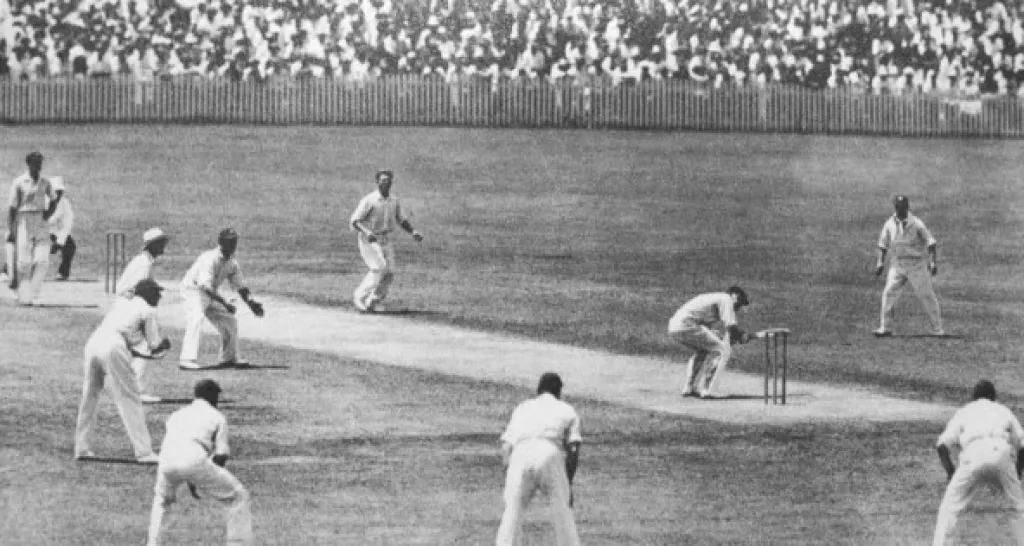England travelled to Australia in the winter of 1928/29 and enjoyed a highly successful tour, winning four out of the five tests and losing the other. In particular, it was a triumph for England batsman Wally Hammond, who scored a then world record of 905 runs more than 113 over the series.
The tone was set from the start in the first Test, also the first ever in Brisbane, where England inflicted a crushing defeat on the hosts.
Batting first, England made 521, Patsy Hendren leading the way with 169, whilst Harold Larwood, batting at number 9, made 70. Then with ball in hand, Larwood took 6-32 as Australia were bowled out for just 122.
England chose not to enforce the follow on. This time they declared on 342/8. Phil Mead top-scored with 73, whilst Douglas Jardine made an unbeaten 65. Australia were all out for just 66 second time round, suffering a 675-run defeat.
Despite the huge defeat, the match is significant in Australian history, for it marked the debut of one Don Bradman. He scored 18 and 1 and was dropped for the next Test match, only to come back.
Australia won the toss and chose to bat first in the second Test in Sydney, Bill Woodfull leading the way with 68 out of a total of 253.
Hammond then came to the fore with 251 as England piled on the runs. Hendren got 74 and George Geary 66 were among those to offer valuable support as the tourists racked up 636.
Australia did better second time round, Woodfull and ‘Stork’ Hendry both scoring centuries, whilst Jack Ryder contributed 79. But the final total of 397 meant that England needed just 15 to win, which they achieved despite the loss of one wicket.
The third Test in Melbourne confirmed that the Ashes urn would be staying in England.
Australia batted first and recovered from a poor start to post a total of 397, thanks to centuries from captain Ryder and Alan Kippax. Meanwhile Bradman made 79, a small prelude of what was to come.
Hammond, though, scored his second consecutive double century, and Jardine made 62, as England responded by making 421.
When Australia batted again, Bradman top-scored with 112, and there was another century for Woodfull as Australia closed on 351.
Chasing 332 to win, England reached their target with three wickets in hand, Herbert Sutcliffe their batting hero this time with 135.
The fourth Test, in Adelaide, was much tighter. This time England batted first, finishing on 334, with Hammond making an unbeaten 119, Jack Hobbs 74, and Sutcliffe 64.
Australia though achieved a small first-innings lead, finishing on 369, largely due to the efforts of young Archie Jackson’s 164.
Hammond again led the way in England’s second innings, posting 177, while Jardine made 98, as England were all out for 383.
Australia were set 349 to win, but they fell just short despite 87 from Ryder and an unbeaten 58 rom Bradman, who ran out of partners at the end. Jack White took 8-128 as England won by 12 runs.
Australia at least had the consolation of winning the fifth Test, in Melbourne.
England batted first and appeared to be in a strong position after making 519, Hobbs getting 142, Maurice Leyland 137 and Hendren 95.
But with Bradman’s 123 and Woodfull’s 102, Australia came close to matching them with their total of 491. Tim Wall then took 5-66 as England were limited to 257 in their second innings. Australia required 286 to win.
They lost five wickets in the process, but Ryder’s unbeaten 57 helped guide them to victory.

